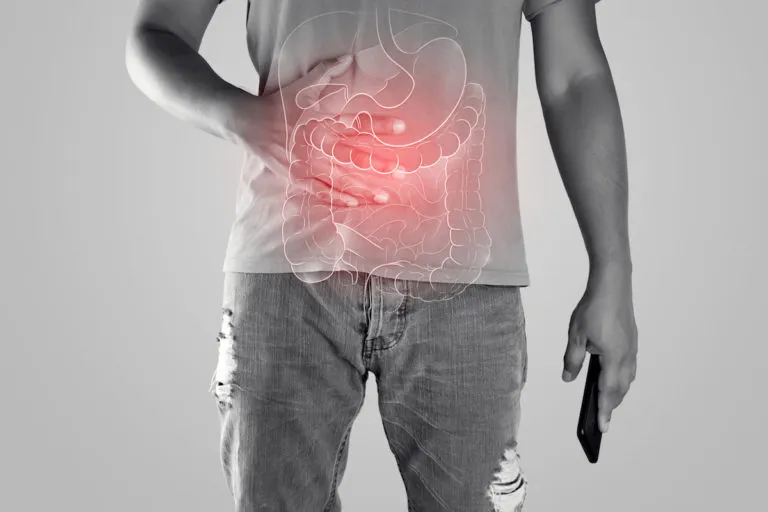Updated on 15. November 2021 from ÁYIO-Q Redaktion
Reading time: approx. 5 minutes
Osteoarthritis is the most common joint disease in the world. It is usually referred to as a mechanical disease and occurs when the joint cartilage is irreparably worn or broken. The affected joint hurts, becomes stiff, and reduces range of motion. If this remains untreated, movements can become downright torture.
Osteoarthritis, the “wear and tear arthritis” also known as degenerative joint disease, develops predominantly after the age of 45 and progresses slowly, often over a decade. Up to the age of 55, it mainly affects men, whereas in later years the disease is more common in women.
In osteoarthritis, the cartilage in the joint gradually becomes thinner and wears away due to a variety of causes. Osteophytes (bone growths) can form when the ends of the bones touch, eventually deforming the joint. When the cartilage wears away so that the bones are in complete contact, osteoarthritis is diagnosed as advanced or end stage. If you have severe osteoarthritis, some of your daily activities will be very difficult, depending on which joints are affected.
Articular cartilage is made of collagen and its basic function is to prevent bones from rubbing directly against each other. When this tissue disappears or degenerates, it begins to cause pain due to bone friction. This is often the explanation for inflammations and deformations in the joints.
The first signs are usually the so-called “start-up pain”. When you start walking, your knees and hips may pull or tighten for the first few feet. Later, it also hurts to move. This pain occurs only after a long walk. Initially, the pain is temporary until, in the later stages, many patients can only move with pain. There may be a constant pain that lasts even at night. The affected joints are often swollen and overheated. Joint effusions can form. This condition is called activated osteoarthritis.
Chronic conditions can cause a person to completely lose their ability to be mobile, which is why it needs to be treated in time. In this sense, one should not belittle the importance of joint pain or “bone crunching”, because it is better to counteract osteoarthritis in time than to have to have it treated by a doctor later.
The joints most commonly affected by osteoarthritis are:
- Knee
- Hips
- Shoulder
- Ankle joints
- Spine
- Finger and toe joints
Factors that may be associated with osteoarthritis:
- Age
- Anatomical anomalies
- Joint trauma
- Repeated high impact sports activities
- Overweight (obesity and overweight)
What are the most common symptoms of osteoarthritis:
- Joint pain
- Start-up pain
- Stiffness within the joint
- Reduced mobility within the affected joint
- bone-on-bone rubbing
- Swelling around the affected joint
- Bone spurs
Treatment options for osteoarthritis from a conventional point of view
If the arthrosis is not yet very advanced, the focus is primarily on conservative therapies. For the patient, this means therapies that do not require surgery for the time being. This includes treatment with medication, physiotherapy, physical therapy and exercise therapy.
Conventional therapy consists mainly of the following options:
Treatment with medication
- Pain medication
- Cortisone preparations
- Basic drugs (DMARDs)
- Classic basic drugs (= conventional, synthetic DMARDs; csDMARDs)
- Biologics (bDMARDs)
- Targeted synthetic basic drugs (tsDMARDs)
Injected painkillers and anti-inflammatories work very well against the pain, but can affect the blood vessels and the stomach. Non-steroidal anti-inflammatory drugs almost all have undesirable side effects when taken continuously, which is why they should be avoided.
A treatment without medication
- Functional and movement training (physiotherapy)
- Hydrotherapy (baths, casts, packs and compresses)
- Weight loss
Operations
- Joint-preserving surgery
- artificial joint prostheses
The 4 stages of osteoarthritis
Osteoarthritis does not develop overnight, but often creeps over a long period of time before the affected person notices the first symptoms. The disease usually passes through the following typical 4 stages:
Stage 1
Initially, the cartilage has small changes and begins to thin. Sufferers have little or no pain.
Stage 2
Increased wear. The cartilage is frayed and cannot dissipate the pressure. This promotes the development of osteoarthritis. The synovia membrana (synovial membrane) may be inflamed. Often, the symptoms that occur cause the person to see a doctor.
Stage 3
The transitional stage. The severely damaged cartilage reduces the joint space or bone distance and increases the load on the bones. Bone growths, called osteophytes, can form to equalise pressure. The joints can become immobile and inflamed.
Stage 4
The final stage. The cartilage is severely degenerated and the bones rub against each other. Bone growths have formed. Patients sometimes experience excruciating pain. Your joints are stiffening.
Regardless of the form of therapy, the active participation of the patient is essential for the successful treatment of osteoarthritis. Those affected should exercise frequently but gently and mindfully to relieve the joints and cartilage, and pay attention to a balanced nutrition to lose weight. If you stick to this, you can delay or stop wear and tear on your joints.
Related articles: Arthrosis
- Osteoarthritis – Alternative treatment options
- Osteoarthritis – What medicinal plants, vitamins and minerals can help?
- Osteoarthritis – How emotions influence osteoarthritis
Sources:
[1] Murray CJL, Lopez AD. The global burden of disease. Geneva: World Health Organisation,1996.
[2] Reginster J-Y. The prevalence and burden of arthritis. Rheumatology2002;41(suppl 1):3–6.
[3] Arthritis Research Campaign. auf https://www.cdc.gov/, Access date 15.07.2021
[4] Altman RD. Criteria for the classification of osteoarthritis. J Rheumatol1991;27(suppl):10–12.
[5] Creamer P, Hochberg M. Osteoarthritis. Lancet1997;350:503–8.
[6] Felson DT, Zhang Y, Hannan MT, et al. The incidence and natural history of knee osteoarthritis in the elderly: the Framingham Osteoarthritis Study. Arthritis Rheum1995;38:1500–5.
[7] Therapie – wie wird Arthrose behandelt?, at https://www.rheuma-liga.de/, Access date 15.07.2021
[8] Arthrose: Gelenkverschleiß aufhalten und behandeln, at https://www.apotheken-umschau.de/, Access date 15.07.2021















